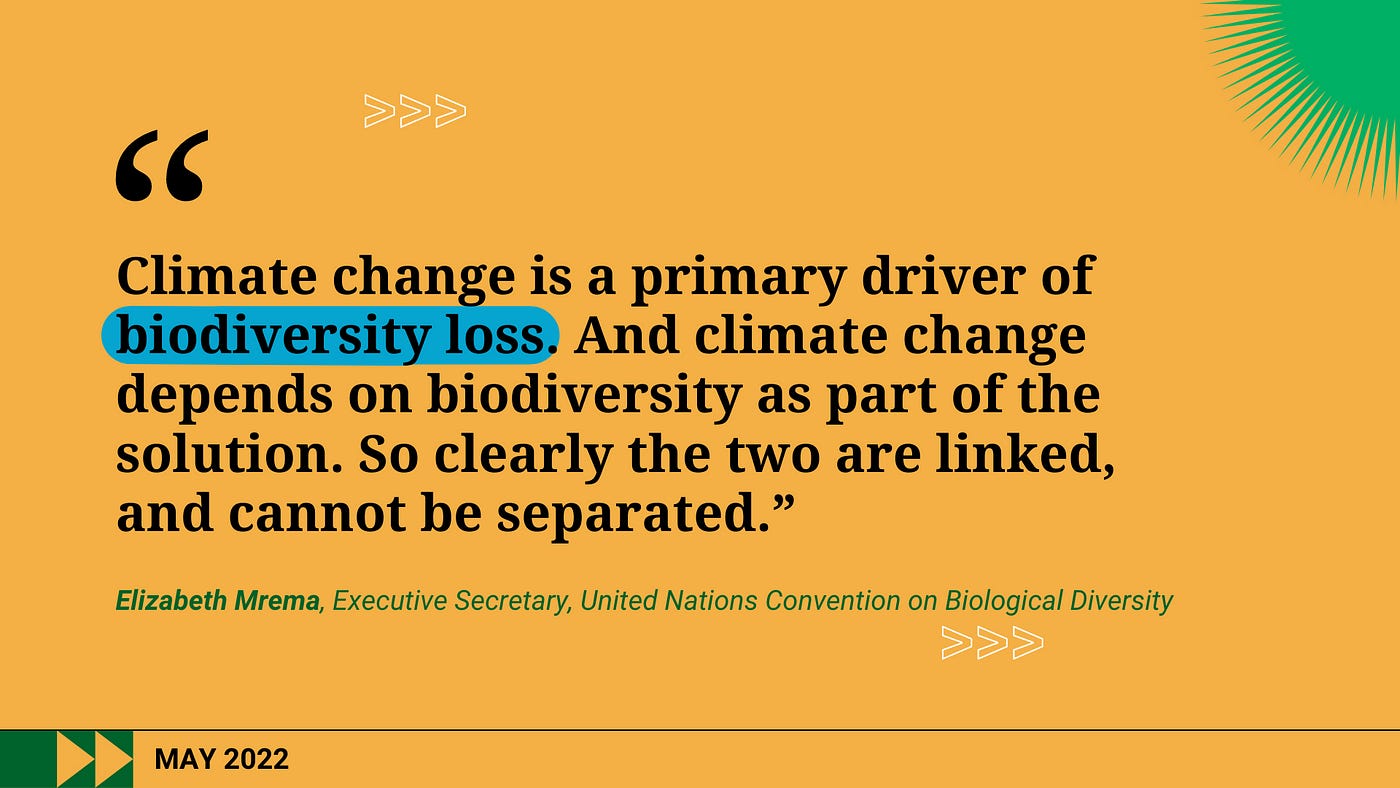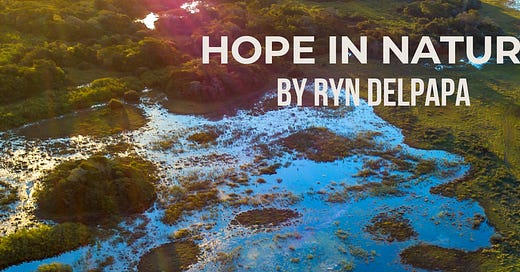Hope in Nature

Do you have hope? Hope in humanity’s capacity to protect nature?
Maybe you’ve whispered to yourself, “Not really,” especially when you open up another doom-inducing media report or article about our current challenges; the biodiversity and climate change crises seem to be at a faltering loss in the face of overwhelming violence and loss.
What if we saw the loss of nature in the same way we see the bloodshed of innocent lives? Would we then recognize that our land and its inhabitants are just as intertwined?
Whether it’s the air or food we breathe, it all comes back to nature and how we coexist with it. So we must ask ourselves: How will we live with nature (and each other)?
“Current biodiversity losses are caused not by human conversion or degradation of untouched ecosystems, but rather by the appropriation, colonization, and intensification of use in lands inhabited and used by prior societies.” (Phys.org)
Indigenous people have been teaching us how to safeguard and honor the lands. It’s our responsibility to listen and collaborate to recognize we all hold internal power, the agency of choice, and the capacity for change for our individual, environmental, and societal betterment.
“Indigenous people own or use a quarter of the world’s land, but safeguard 80 percent of remaining biodiversity — a testament to centuries of sustainable practices that modern science is only just starting to understand. (Phys.org)
This isn’t an article shaming the modern reader for the civilization and land you live upon, but rather a call for each of us to understand that the complexity of our lives means holding space for the issues of our time, reflecting on the past, and engaging with that wisdom to address the call-to-action.
“Biodiversity, biological diversity, is the variety of life on Earth, in all its forms, from genes and bacteria to entire ecosystems such as forests or coral reefs. The biodiversity we see today is the result of 4.5 billion years of evolution, increasingly influenced by humans.” (UN)

Climate change, biodiversity, and pollution are the three linked issues we face, referred to as the “triple planetary crisis.”
Biodiversity is not a subset of climate change
Biodiversity, Climate Change, and Air Pollution are interrelated crises that hold similar problemsets
9 out of 10 people breathe air that contains pollutants that exceed WHO guidelines
Like most complex issues, the crucial steps for addressing them are knowledge, awareness, cross-functional collaboration, and accountability.
When the world and humanity face a multitude of crises and overwhelm, we are given the opportunity to accept the multitudes of truth.
We are predominantly a modernized society, depending on your socio-economic and regional factors, and identify as an indigenous person and local community (IP and LCs) member descended from the original inhabitants of a given region, that must take accountability for our modern ways of being. The actions don’t always need to be grand, but we do need grand actions.
“Biodiversity and nature’s contributions to people are our common heritage and humanity’s most important life-supporting ‘safety net’. But our safety net is stretched almost to breaking point,” said Prof. Sandra Díaz (Argentina), who co-chaired the IPBES Global Assessment Report on Biodiversity and Ecosystem Services with Prof. Josef Settele (Germany) and Prof. Eduardo S. Brondízio (Brazil and USA). (IPBES)
The five direct drivers of global change in nature (in descending order of impact):
Changes in land and sea use
Direct exploitation of organisms
Climate change
Pollution
Invasive alien species
“Climate change has altered marine, terrestrial, and freshwater ecosystems around the world. It has caused the loss of local species, increased diseases, and driven mass mortality of plants and animals, resulting in the first climate-driven extinctions. On land, higher temperatures have forced animals and plants to move to higher elevations or higher latitudes, many moving towards the Earth’s poles, with far-reaching consequences for ecosystems. The risk of species extinction increases with every degree of warming.” (UN)

The pivotal IPBES Global Assessment Report on Biodiversity and Ecosystem Service assessment written in 2019 included 310 contributing authors and 145 expert authors from 50 countries with a “systematic review of about 15,000 scientific and government sources” and “it (for the first time ever at this scale) [included] indigenous and local knowledge, particularly addressing issues relevant to Indigenous Peoples and Local Communities.” (IPBES)
A report won’t take the actions needed to address our triple planetary crisis, but you can. In the small steps we take with our choice to recycle, offset our carbon footprint, use alternative modes of travel, compost, and make other climate-conscious choices can culminate in change.
Engage with organizations that are calling for change, and the next time you go outside, ask yourself: What is my relationship with nature?
Resources:



